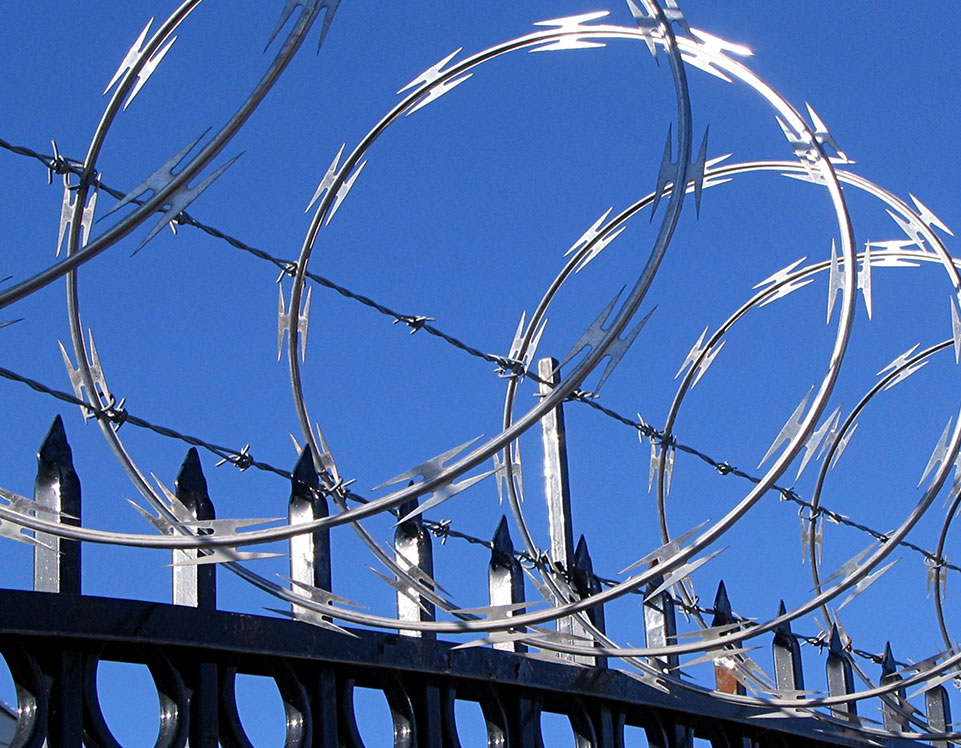How Fiber Security Helps Prevent Intrusions and Improves Surveillance
Wiki Article
The Ultimate Overview to Fiber Optic Security Equipments for Your Service
In a period where safety issues are extremely important for companies, recognizing the complexities of fiber optic technology can be transformative. This guide describes just how integrating fiber optic security systems not only enhances information defense however also provides benefits like resistance to disturbance and real-time monitoring abilities.Recognizing Fiber Optic Technology

The core of a fiber optic cable television consists of a slim glass or plastic facility, surrounded by a cladding layer that mirrors light back right into the core. Single-mode fibers are developed for long-distance transmission, while multi-mode fibers are suitable for much shorter ranges, typically made use of within structures.
Fiber optics are not just much faster yet additionally much more protected than conventional circuitry. Their fundamental resistance to electromagnetic interference and the problem of taking advantage of the signal without discovery make them a favored choice for organizations focusing on data integrity and safety and security. As organizations significantly rely upon safe and reliable communication systems, comprehending fiber optic innovation ends up being essential for educated decision-making.
Secret Advantages of Fiber Optic Protection
When taking into consideration safety and security options for a business, the advantages of fiber optic systems are especially compelling. Fiber optic modern technology provides extraordinary data transmission speeds and data transfer capability, making it suitable for dealing with high-resolution video feeds from security video cameras. This ability guarantees that safety workers get real-time data, enhancing overall action times to potential safety and security hazards.In addition, fiber optic cords are naturally immune to electro-magnetic interference, which can endanger the integrity of typical copper-based systems. This resistance ensures that the information transmitted remains protected and undisturbed, supplying a much more trustworthy safety facilities. In addition, optical fiber are less at risk to physical damage, as they are made from glass instead of steel, lowering maintenance prices and downtime.
Fiber optic systems use boosted cybersecurity attributes, including file encryption abilities that safeguard sensitive information from unauthorized accessibility. Collectively, these benefits make fiber optic safety systems a robust selection for businesses looking for to improve their protection actions.
Installation Refine and Considerations
Considering the intricacies entailed, the installation process of fiber optic safety systems requires mindful planning and implementation. The initial action involves a thorough site evaluation to identify optimum locations for cabling and equipment. This assessment ought to consider ecological elements, existing framework, and possible vulnerabilities.
Additionally, the setup should follow neighborhood structure codes and industry standards. This may include collaborating with different stakeholders such as building supervisors, IT teams, and security personnel to ensure smooth integration with existing systems.
Post-installation, strenuous screening is required to verify system performance and recognize any type of issues that might arise. By prioritizing these considerations throughout the setup procedure, services can guarantee a durable and reliable fiber optic protection system that satisfies their specific safety needs.
Most Current Developments in Fiber Optic Safety
Current developments in fiber optic modern technology have dramatically boosted the capacities of security systems for services. Among the most remarkable developments is the combination of fiber optic sensing units that can spot resonances and breaches along the perimeter of a center. These sensing units give real-time tracking, making it possible for quick reaction to prospective breaches.In addition, the development of distributed fiber optic noticing modern technology allows for the constant monitoring of big locations with a solitary fiber wire. This method not only minimizes installation expenses however additionally boosts the reliability of keeping an eye on systems by eliminating the demand for numerous, different sensing units.
Furthermore, developments in multiplexing methods have enabled companies to transfer huge amounts of data over fiber optic networks, boosting the capacities of video clip security systems. High-def video feeds can currently be sent out over fars away without loss of quality, guaranteeing that safety and security personnel fiber security system have access to clear and actionable details.
Lastly, using fabricated intelligence (AI) in conjunction with fiber optic systems is revolutionizing threat discovery. AI algorithms can assess information from fiber optic networks to recognize unusual patterns or actions, permitting proactive safety actions. These technologies collectively represent a significant jump ahead in fiber optic safety and security technology.
Picking the Right System for Your Organization
Picking the appropriate fiber optic protection system for your service is vital for guaranteeing optimal defense and satisfaction. To make an enlightened option, evaluate your specific protection requirements, taking into consideration aspects such as the dimension of your facilities, the nature of your procedures, and possible susceptabilities.Begin by evaluating the level of security needed; as an example, risky atmospheres might require advanced systems with incorporated surveillance and intrusion discovery capabilities. Next, consider scalability; as your service expands, your safety system must be capable of broadening to suit enhanced demands without significant overhauls.
In addition, investigate the reliability and performance of different systems. Look for suppliers with well-known reputations and customer reviews that attest to their solution high quality. It's likewise a good idea to ask about the innovation's compatibility with existing infrastructure, making sure a smooth combination process.
Final Thought
To conclude, fiber optic safety and security systems provide a durable option for improving company safety and security infrastructures. The combination of high-speed information transmission, resistance to electro-magnetic interference, and advanced surveillance abilities substantially boosts general security (fiber optic security system). By understanding the modern technology, identifying its benefits, and considering the setup process, companies can make educated decisions. The most recent innovations additionally bolster the performance of these systems, making sure that companies remain safe and adaptable in an ever-evolving threat landscape.Report this wiki page